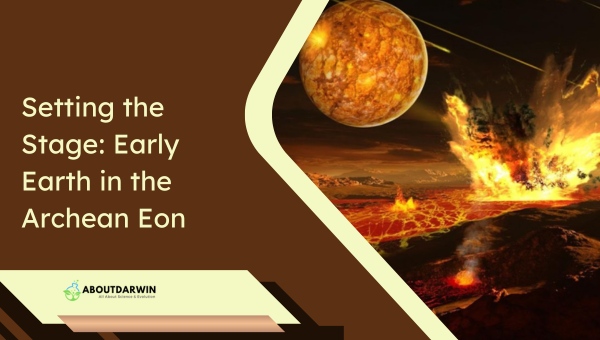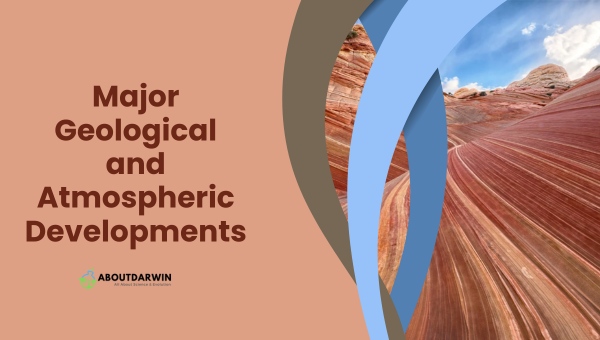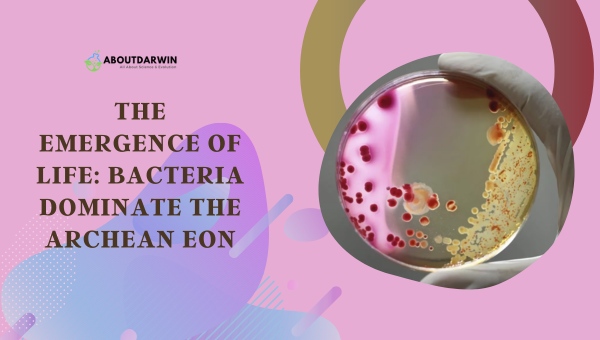Physical Address
304 North Cardinal St.
Dorchester Center, MA 02124
The Archean Eon, spanning from 4.0 to 2.5 billion years ago, marks a transformative period in Earth’s history, laying the groundwork for life as we know it. During this era, the planet’s crust solidified, leading to the formation of the first continents and oceans.
The atmosphere underwent significant changes, transitioning from a toxic mix to a more stable environment. This eon is particularly intriguing as it witnessed the emergence of the first single-celled organisms, which would eventually play a crucial role in shaping Earth’s atmosphere and paving the way for complex life forms.
The mysteries of this ancient time continue to captivate scientists today.
Contents
The Archean Eon, spanning roughly 4.0 to 2.5 billion years ago, is a fascinating era that saw the formation of our planet’s oldest rocks and the emergence of life. In this section, we’ll explore the factors that set the stage for the diverse and dynamic environment that emerged.

During the Archean Eon, Earth was vastly different from today’s. The atmosphere lacked oxygen and was mainly composed of carbon dioxide, methane, and water vapor.
This meant that there was no protective ozone layer, so the planet would have been exposed to high levels of ultraviolet radiation. Additionally, the Sun was only about 70% as bright as it is now, making the climate cooler.
In spite of the cooler temperatures, there was still a significant amount of volcanic activity during the Archean Eon, contributing to the formation of the Earth’s crust.
The first continental crusts began to form as volcanic materials accumulated, and tectonic activity led to the formation of the earliest continents, called “cratons.”
The Earth’s hydrosphere also underwent significant changes during this eon. No ocean basins existed at the start of the Archean, but as tectonic activity continued, the first oceans began to form.
The water in these oceans came from a combination of processes, including volcanic outgassing and the release of water trapped in minerals.
The Archean Eon witnessed several important developments:
The Archean Eon played a crucial role in shaping our planet and the life it harbors. Although many details of this early period remain a mystery, the insights gained from studying the ancient rocks and microbes that populated.
The Archean Eon represents a significant chapter in Earth’s geological history, spanning from approximately 4.0 to 2.5 billion years ago. This eon is characterized by the formation of the Earth’s first stable continental crusts and the emergence of life, primarily in the form of simple, single-celled organisms.
The atmosphere during this period was vastly different from today, likely consisting of methane and ammonia, which set the stage for future biological evolution.
The Archean Eon is divided into four distinct eras, each marking critical developments in Earth’s geological and biological landscape.
The Earth during this time have significantly advanced our understanding of the planet’s development and the origins of life.
Also Read: The Density of Earth: Insights into Our Earth’s Constituents
The Archean Eon, it’s essential to discuss some major geological and atmospheric developments during this era. From approximately 4.0 to 2.5 billion years ago, the Archean Eon marks a significant period in Earth’s history.

One of the most notable features of the Archean Eon is the formation of the crust and continents. It was during this time that the first continental crusts emerged, primarily composed of granite, tonalite, and trondhjemite.
These mineral-rich crusts provided the foundation for future landmasses on Earth. Throughout the Archean, processes such as volcanic activity and plate tectonics contributed to the gradual assembly of the continents we know today.
Another vital development during the Archean Eon was the formation of the Earth’s atmosphere. The early atmosphere was dominated by hydrogen and helium but gradually changed as the planet cooled, allowing for the presence of other gases like methane, ammonia, water vapor, and carbon dioxide.
A significant event during this time was the emergence of cyanobacteria, or blue-green algae. These organisms:
The Archean Eon was also characterized by the presence of volcanic and geothermal activity. These processes helped to shape the Earth’s surface and provided an essential heat source in the form of geothermal gradients.
These variations in temperatures at different depths within the Earth contributed to the following:
The emergence of stable isotope evidence in the Archean Eon has shed light on the existence of a liquid water ocean during this era.
Some studies suggest periodic episodes of glaciation during the Archean, hinting at a potential early climate. These early oceans played a critical role in the development of life on Earth.
The Archean Eon, spanning from approximately 4.0 to 2.5 billion years ago, is a crucial period in Earth’s history characterized by significant geological and biological developments.
During this eon, the planet underwent substantial changes that laid the groundwork for future life and geological structures.
The cooling of the Earth allowed for the formation of stable continental crusts, the emergence of oceans, and the development of early life forms, particularly prokaryotes like cyanobacteria. These events were pivotal in shaping the planet’s atmosphere and geological landscape.
These major events collectively highlight the significance of the Archean Eon in Earth’s geological and biological evolution, setting a foundation for future developments.
Also Read: 10 Asthenosphere Facts: Exploring the Earth’s Mysterious Layer
The Archean Eon timeline, spanning from 4.0 to 2.5 billion years ago, marks a pivotal chapter in Earth’s history, characterized by significant geological and biological developments.

Among the Archean major events was the emergence of life, with bacteria dominating this era and profoundly influencing the planet’s environment.
One of the critical milestones of the Archean Eon was the formation of the Earth’s first proto-continents. This process led to the creation of ancient oceans, which became vital habitats for early microbial life.
Fossil evidence from this period, including stromatolites—layered structures formed by microbial activity—dates back approximately 3.5 billion years, showcasing the thriving bacterial communities in these marine environments.
Life during the Archean Eon was predominantly prokaryotic. These single-celled organisms, which lacked a nucleus, were remarkably diverse and adaptable.
Some notable bacterial communities that defined this eon include:
A transformative event tied to the Archean Eon timeline was the role of cyanobacteria in oxygenating the Earth’s atmosphere.
This gradual accumulation of oxygen, which began around 2.45 billion years ago, ultimately led to the Great Oxygenation Event, a precursor to more complex life forms emerging in subsequent eons.
Archean Eon was a period of profound geological and biological evolution. From the formation of proto-continents to the rise of oxygen-producing cyanobacteria, the Archean major events laid the foundation for Earth’s modern biosphere, shaping the trajectory of life on our planet.
The Archean Eon represents a significant chapter in Earth’s history, marked by transformative geological and biological developments. During this period, the planet saw the formation of stable continental crusts and the emergence of early life forms, primarily prokaryotic organisms.
Major events such as the appearance of stromatolites and the rise of photosynthesis played pivotal roles in shaping the environment and paving the way for future evolutionary advancements.
These foundational occurrences helps us appreciate the complex evolution of life on Earth and its enduring impact on our planet’s biosphere.